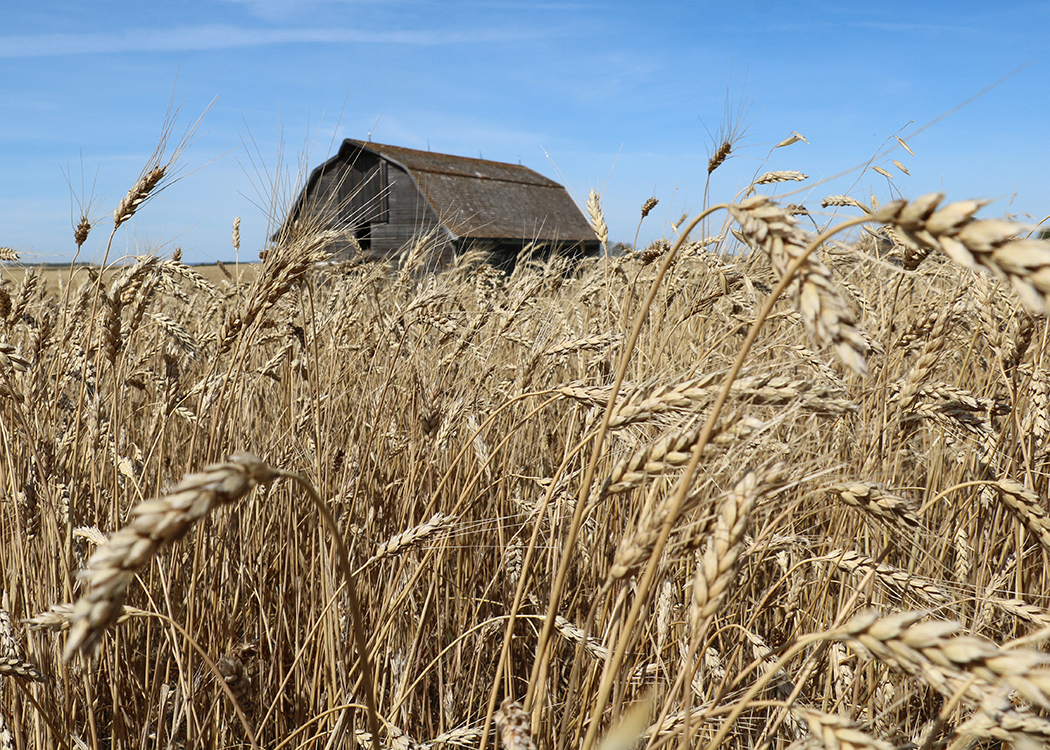© 2025, Nutrien Ag Solutions, Inc

Treated cereal acres on the rise in the Prairies
Seed treatments are often used to control pests that affect crops very early in the growing season with the goal to improve the establishment of healthy crops. While it has become standard on canola and often on soybean seed, it’s an additional decision for growers on their cereal crops.
Possibly due to the wet weather in some parts of the Prairies over the last few years, seed treatment usage is on the rise. In 2016, 62 per cent of cereal acres received a seed treatment, a seven per cent increase over 2014 acres.
While there is an obvious cost associated with seed treatment, caring for cereal seed and early season seedlings can be more cost effective than trying to battle disease and pests later in the season – and more environmentally friendly.
“Like all products that farmers use, the benefit needs to outweigh the cost,” says Lyle Cowell, manager of agronomic services with Nutrien Ag Solutions in northeast Saskatchewan. “In many cases, the cost of seed treatment is quite small relative to other input costs, and nothing is more valuable than a well-established crop in spring. Good seed and seed treatments can be the foundation of a good harvest.”
Why treat your cereal seed?
Cereal seed treatments can be either fungicides or insecticides, battling diseases and insect pests. A few of the most costly and common problems in cereals today include wireworm, fusarium head blight (FHB) and smut.
Seed-applied insecticides are used to suppress wireworms, which can be a significant pest in some fields. Fungal pathogens infect the seed in the previous season or from soil surrounding the seed in the seedbed, which makes a seed treatment critical to developing strong seedlings.
“Farmers are often using short rotations, which makes disease risk greater,” says Cowell. “While it is important to start seeding early in spring, soil conditions may not yet be ideal. The keys are good quality seed, the right seed variety and a suitable seed treatment.”
“Diseases such as Fusarium can directly damage the seed or the emerging seedling, and the only way to suppress seedling disease is to apply an effective fungicide to seed,” says Cowell.
Of course weather and growing conditions play a huge role in disease infection and severity, and should be considered during planning. “While we don’t have any control over these issues, there are certainly things to be done to mitigate their impact.”
Testing an important tool
When there are significant levels of disease fungi on the seed or in the seedbed, or if growing conditions are poor, the seedlings are vulnerable to disease before the plant can establish itself.
Testing the seed – as close as possible to planting – can measure the level of disease on the seed itself. “Growers should always use seed that has been recently tested for both germination and the primary diseases for that crop. Very often seed that has a lower germination level will have more seed-borne disease,” says Cowell.
Purchasing Certified seed provides growers with assurance that it has been tested for germination and for critical diseases for that crop species. “Seed treatment can also benefit Certified seed, as it will afford some protection against soil and residue borne pathogens.”
Soil-borne diseases
Knowing the history in the field is a good place to predict pest risk, but determining the level of disease in the soil is difficult to estimate. If a crop has had issues with seedling disease in the field in previous years, then the risk will remain for the next crop.
Many soil-borne diseases are specific to certain crop species. This includes both seedling disease and foliar or flowering diseases. Speaking with your Nutrien Ag Solutions agronomist will help in developing an understanding of the possible issues specific to the region and making a plan to combat them.
One of the most effective steps to reduce crop disease is to implement a responsible crop rotation. “It is best to include both cereals and broadleaf crops in a rotation, and it is of further value to include different species of each,” says Cowell. “A rotation such as ‘canola – barley – peas – wheat’ would certainly have less disease risk than a rotation of ‘wheat-canola-wheat-canola’.”
Crop rotations will vary across the Prairies and between farms, but crop diversity is a key to reduce plant pathogens that infect seed, roots and foliage.
Application
Once a grower has made the decision to plant treated seed, the next step should be to ensure the seed treatment is applied correctly.
“Manufacturers make every effort to provide a product that is effective at recommended rates of application, so growers should follow these guidelines,” adds Cowell.
“It is important to apply fungicide uniformly, whether it is on seed as a pre-plant treatment or on leaves as a post-emergent,” suggests Cowell. “Full coverage of plant tissue is very important, and good application equipment is valuable for both applying fungicide to seed and to leaves.” Investment in good seed treating equipment is important for both farm-saved and Certified seed.
The best practices a farmer can use to control disease and pests start with seed treatment and include crop rotation, selecting crop varieties with lower disease risk and careful use of pesticides.
“Farmers do need to give this thought – a bad start to any crop cannot be fixed with any remedy later in the season. Nutrien Ag Solutions staff have the training and information to help producers select the right cereal seed treatment,” says Cowell.
